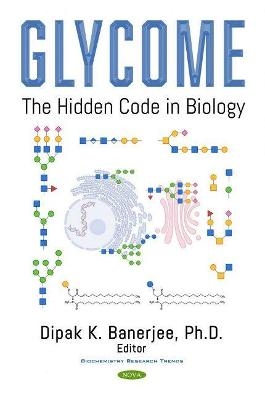This book addresses one of the most fundamental questions in biology today. The book targets readers with little expertise as well as the experts in Glycoscience. Sugars are electroneutral. However, linking sugars to sugars, or attaching sugars to proteins or lipids changes the structural and functional identities of the glycoconjugate, and enables to form cellular networks of 4Gs [i.e., glycoproteins (N-linked or O-linked), glycosphingolipids, proteoglycans and glycosaminoglycans (GAGs)]. These glycans (i) support growth, proliferation and differentiation of cells and tissues; (ii) protect cells from foreign invasions including bacteria, viruses, parasites as well as from changes in the extracellular environment; (iii) act as biomarkers and participate in transmembrane signalling. The glycans are not ubiquitous but they are tissue/species specific. Structurally, the glycans are diverse, and form linear to highly branched structures. This diversity is present not only across the species but also within cells of the same species, i.e., the glycoforms. Nuclear magnetic resonance (NMR) and mass spectrometric (MS) studies (i.e., Glycomics) have evaluated and contributed significantly in delineating the structural diversity of glycans. Glycomics, in fact, has helped in overcoming many earlier technological barriers which were otherwise very laborious and time consuming. Plant lectins being carbohydrate binding proteins with a high degree of sugar specificity have been useful tools to characterize the carbohydrate structures they recognize. The glycan structures complement their biosynthetic processes. Because of the highly compartmentalized nature of the process, the glycans move between compartments during their assembly. This is believed to be mediated by vesicular structures but the participation of exosomes cannot be ruled out. A large number of genetic disorders [gangliosidosis, mucopolysaccharidoses, congenital disorders of glycosylation (CDG)] are due to abnormal glycan synthesis or degradation. Disproportionate expression of glycans is also found in diseases like cancer, neurological disorders, diabetes, metabolic syndromes, and infection. This raises questions about the regulatory principle(s) in glycan biosynthesis. There is no template for glycan chain synthesis, elongation, processing or termination. The cells/tissues follow a highly conserved mechanism. The assumption is glycosylation uses donor and acceptor interactions as the driving force. Increased or decreased synthesis of glycans in response to the environmental change influence cell function, i.e., growth, survival or death favour of a "push-pull" hypothesis. In the absence of a genetic code for sugars, the assembly as well as the processing of glycan chains are controlled by the Glycome. Unlike the genome, the Glycome is hidden for the normal eye but its communication skills with the cellular microenvironment and genome for glycan synthesis and degradation are enormous. Seventeen chapters in the book are dedicated to walk the readers through the diversities of the Glycome. The authors have used mammalian, microbial and plant systems to achieve the desired goal.
Preface; Interactome Facilitates Activation of Glycome Code for Asparagine-linked Protein Glycosylation; Oligosaccharides, Oligosaccharyl Phosphates and Congenital Disorders of Glycosylation; Role of Inflammation in the Regulation of Epithelial cell O-Glycosylation; The O-GlcNAc Modification in Physiology and Disease; Polysialic Acid as an Integrative Decoder in Nervous and Reproductive Systems; Decoding of α-Dystroglycan Glycosylation and Muscular Dystrophy; The Structure of Glycosphingolipid Oligosaccharides Hides a Specific Code for Protein Recognition; Stereo-specific Glycomic Codes of the Normal and the Metastatic Cancer Cell Surfaces: Biosynthetic Pathways of Glycosphingolipids and its Probable Biological Functions; Carbohydrates in Health and Disease: A Plants Perspective; New Paradigm for Chronic Inflammation Mediated by GM3 Ganglioside Molecular Species; Glycans as Gastrointestinal Cancer Biomarkers: Old and New Diagnostic, Predictive and Stratifying Tools ; Development of a Comparative Heparan Sulfate Mutant Cell Library and its Application to Determine the Structure-Function Relation of Heparan Sulfate in Regulation of FGF2-FGFR1 Signaling; Bacterial Capsular Polysaccharides of Pathogens A Toolbox for Vaccines and Therapeutics; Polyvalency of Glycotopes and their Conformational Features in Glycans as the Most Powerful Recognition Factors for the Glycan-Lectin Interactions; Protein-Glycan Interactions as Revealed by NMR Spectroscopy; Glycobioinformatics in Deciphering the Mammalian Glycocode: Recent Advances; Is it Time to Switch over to Glyco Molecular Patterns?; Index.
| Erscheinungsdatum |
07.06.2021
|
| Sprache |
englisch |
| Gewicht |
942 g |
| Themenwelt
|
Naturwissenschaften ► Biologie ► Biochemie |
| ISBN-10 |
1-5361-9377-1 / 1536193771 |
| ISBN-13 |
978-1-5361-9377-0 / 9781536193770 |
| Zustand |
Neuware |



